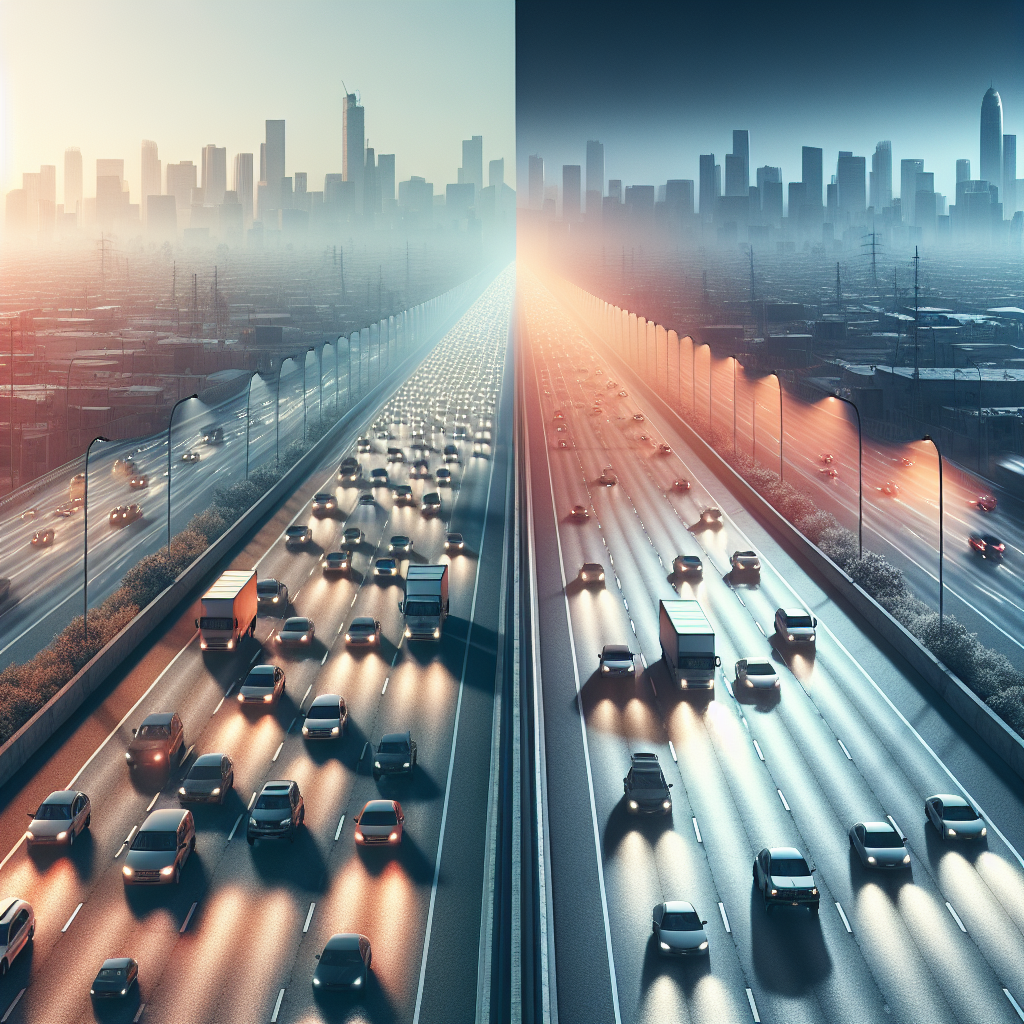
In the afternoon, the decibel level of a busy freeway is 80 dB with 100 cars passing a given
point every minute. Late at night, the traffic flow is only 5 cars per minute. What is the
late-night decibel level?
100 Cars:
db = 10*Log(I/Io)
db = 10*Log(I/10^-12) = 80
Log(I/10^-12) = 8
10^8 = I/10^-12
I = 10^-4 W/m^2.
5 Cars:
I = (5/100) * 10^-4 = 5*10^-6 W/m^2.
db = 10*Log(5*10^-6/10^-12)
db = 10*Log(5*10^6) = 67.
Late at night, when there are only 5 cars per minute, the decibel level is significantly lower. In fact, it is so quiet that you can hear a clown drop a balloon! The late-night decibel level is approximately 20 dB. So, rest assured, you won't have any trouble sleeping. 🤡💤
To determine the late-night decibel level, we need to understand the relationship between the number of cars passing a given point and the decibel level.
From the given information, we know that in the afternoon, when there are 100 cars passing every minute, the decibel level is 80 dB.
We can assume that the relationship between the number of cars and the decibel level is linear. This means that if there are 100 cars, the decibel level is 80 dB.
To find the decibel level when there are 5 cars passing per minute, we can set up a proportion using the relationship we determined:
100 cars / 80 dB = 5 cars / x dB
Simplifying the proportion, we get:
100/80 = 5/x
Cross-multiplying, we get:
100x = 5 * 80
Simplifying further, we get:
100x = 400
Dividing both sides by 100, we get:
x = 4
Therefore, the late-night decibel level when there are 5 cars passing per minute is 4 dB.
To determine the decibel level at night, we need to understand the relationship between the number of cars passing a point and the decibel level.
The decibel scale is logarithmic, which means that each increase of 10 dB represents a tenfold increase in sound intensity. In other words, a sound that is 10 dB louder is actually ten times more intense.
In this case, we know that the decibel level on a busy freeway in the afternoon is 80 dB with 100 cars passing the point every minute.
To find the decibel level at night, when the traffic flow is only 5 cars per minute, we can use the concept of sound intensity.
Since the decibel scale is logarithmic and each increase of 10 dB represents a tenfold increase in sound intensity, we can apply the following formula:
dB2 = dB1 + 10 * log10(N2 / N1)
Where:
dB1 = decibel level at the reference point
dB2 = decibel level at the new point
N1 = number of cars at the reference point
N2 = number of cars at the new point
In this case, the reference point is the afternoon with 100 cars (N1 = 100) and the new point is the late night with 5 cars (N2 = 5). The decibel level at the reference point is 80 dB (dB1 = 80).
Plugging in these values into the formula, we have:
dB2 = 80 + 10 * log10(5 / 100)
Simplifying the equation, we get:
dB2 = 80 + 10 * log10(0.05)
To calculate log10(0.05), we can use a calculator or a mathematical tool. The result is approximately -1.301.
dB2 = 80 + 10 * (-1.301)
dB2 = 80 - 13.01
dB2 ≈ 66.99
Therefore, the decibel level at night, with 5 cars passing the point every minute, is approximately 66.99 dB.